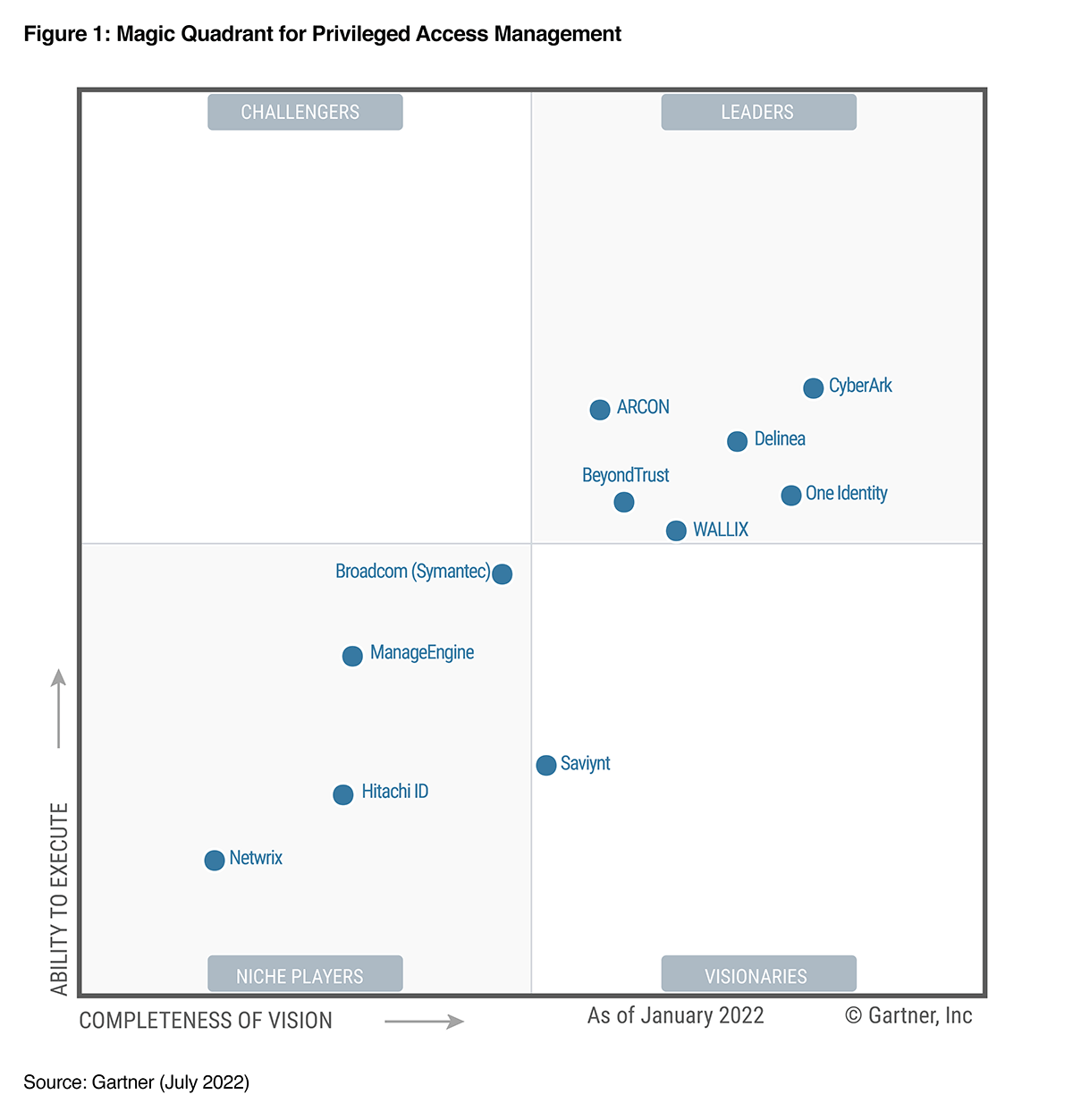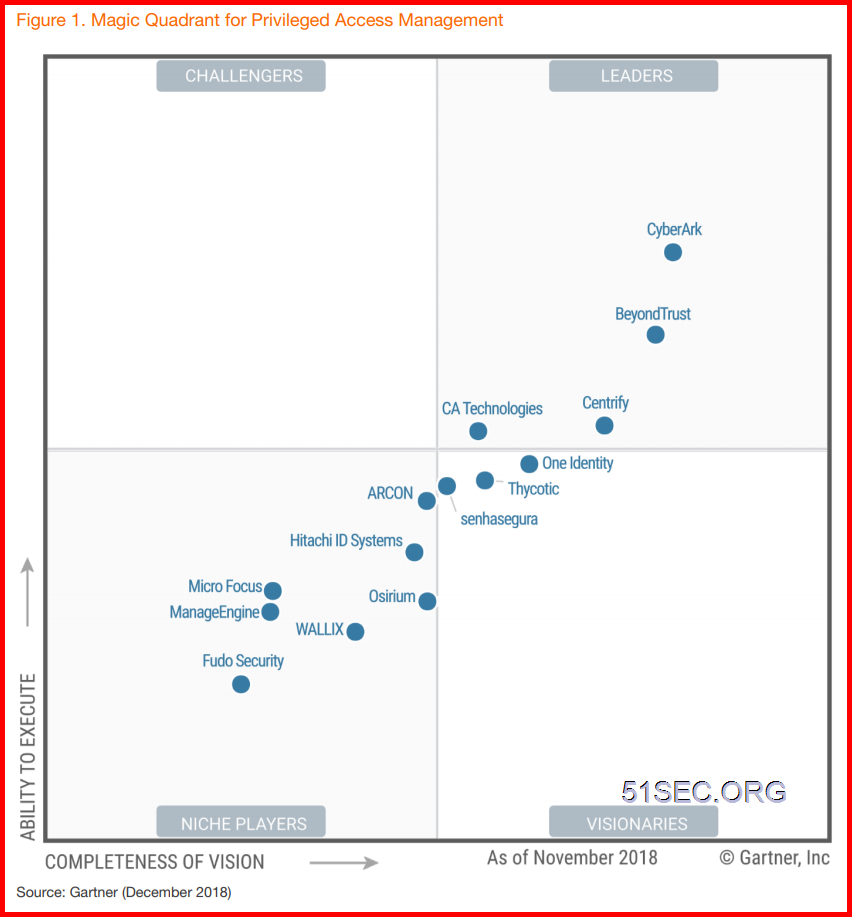Gartner defines the privileged access management (PAM) market as tools that “discover, manage and govern privileged accounts on multiple systems and applications; control access to privileged accounts, including shared and emergency access; and monitor, record, audit and analyze privileged access, sessions and actions.”
PAM is often equated with Identity and Access Management (IAM), a similar practice. In order to qualify for inclusion in this quadrant, vendors must deliver a service that features the following characteristics:
- Tools to discover, map, and report any privileged accounts on multiple devices, applications, endpoints, and systems
- A hardened, secured, and highly available vault for storing secrets and credentials
- User interfaces to review privileged credentials
- Tools to automatically rotate and manage credentials for service, administrative, device, system, and application accounts
- Support for role-based administration including centralized policy management
- Reporting and analytics tools of privileged accounts
|
2022 |
2021 |
2020 |
2018 |
|
|
Leaders |
CyberArk
|
CyberArk |
CyberArk |
CyberArk |
|
BeyondTrust |
BeyondTrust |
|||
|
Thycotic |
Centrify |
|||
|
Centrify |
CA Technologies |
|||
|
Challengers |
|
Senhasegura |
ARCON |
|
|
senhasegura |
||||
|
Hitachi ID Systems |
||||
|
Visionaries |
Saviynt |
|
One Identity |
One Identity |
|
Thycotic |
||||
|
senhasegura |
||||
|
Niche Players |
Broadcom (Symantec) |
Broadcom (Symantec) |
WALLIX |
ARCON |
|
Krontech |
Hitachi ID Systems |
|||
|
Broadcom |
Osirium |
|||
|
ManageEngine |
WALLIX |
|||
|
|
Micro Focus |
|||
|
|
ManageEngine |
|||
|
|
Fudo Security |
2022
2021
2020
2018
References

_Magic-Quadrant-for-Privileged-Access-Management--Lead.jpeg)

